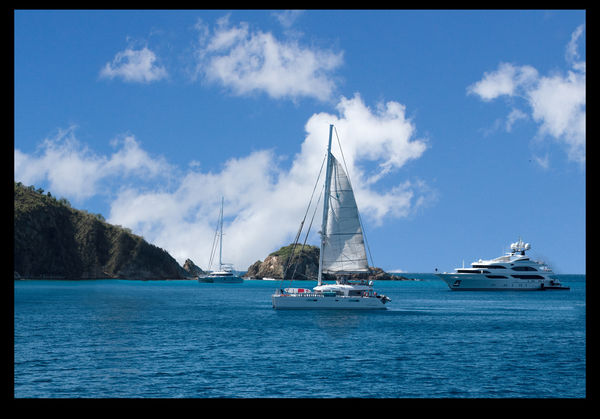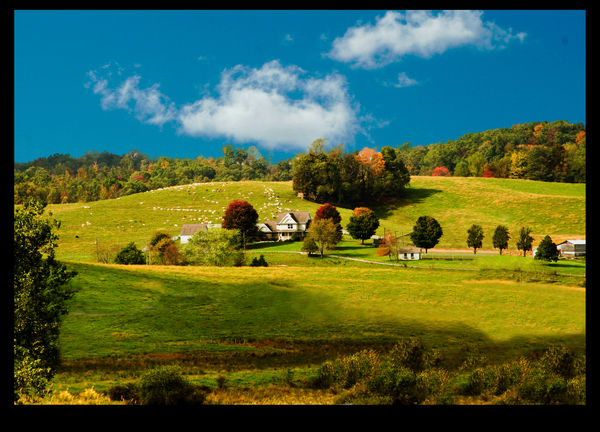Posts for: Weddingguy
May 24, 2019 11:04:32 #
#24 I find creative AND well done 

May 20, 2019 11:43:35 #
I have an on-line sales business, and even though this new tax law affects my business I think it is a good thing!
Imagine you have a bricks and mortar camera shop offering personal service that cannot be matched on-line. You pay knowledgeable staff to keep the doors open, and many other high expenses, like rent, liability insurance and business taxes. How in the world can you compete with on-line discounted sales that offer no personal service and knowledge??
EVER WONDER WHERE ALL THE HELPFUL CAMERA SHOPS WENT???
Imagine you have a bricks and mortar camera shop offering personal service that cannot be matched on-line. You pay knowledgeable staff to keep the doors open, and many other high expenses, like rent, liability insurance and business taxes. How in the world can you compete with on-line discounted sales that offer no personal service and knowledge??
EVER WONDER WHERE ALL THE HELPFUL CAMERA SHOPS WENT???
May 18, 2019 12:22:17 #
stevetassi wrote:
My nephew's wedding will be here soon and I own a Nikon D750 along with the 24-120 f/4 lens. Should I consider purchasing a 70-200 f/2.8 or do you think what I have is sufficient?
Rent the 24-70 . . . or hire a photographer that has one. Your lens is NOT ideal!
May 17, 2019 15:57:35 #
May 17, 2019 15:49:26 #
Here is a short video that does well in understanding physically how the shutter and high speed sync work. Check it out.
https://www.youtube.com/watch?v=LWF-tEAK5e0&t=3s
https://www.youtube.com/watch?v=LWF-tEAK5e0&t=3s
May 8, 2019 15:48:16 #
Worked a bit on composition . . . preferred the boats sailing into the frame.
May 7, 2019 20:07:42 #
boberic wrote:
Canon makes 2 24-105 lenses the L lens is pricey but the non L version gets very good reviews, ans costs a lot less. Something like $500 used. Take a look at it. The classic portrait lens is sabout 100mm for full frame For your crop sensor the 25-105 would fill the bill.
The "rule of thumb" as to the ideal portrait lens has always been approximately 1 and 1/2 times the standard focal length. (from what I was taught in approximately the year of 1950) This applies to all film sizes from 35mm to an 8 x 10 view camera or larger. Going longer is considered acceptable to a point, but can be over done. Going less is not usually recommended. Ultra sharpness is not a serious consideration of quality of a "portrait" lens.
May 7, 2019 10:53:42 #
Haydon wrote:
I personally would not use a 150-600 lens in a st... (show quote)
Best suggestions yet!!



May 7, 2019 10:50:56 #
pablake wrote:
Hi ,My name is Phyllis, I am an amature photgraphe... (show quote)
Firstly let me say that which camera you have is not a consideration, other than that the 70D is a crop factored camera.
The ideal focal length for closer-in portraits, (from waist up to head shots) on a crop factored camera, especially indoors in an average home, would be from 50 to 70 mm. Below 50mm will create unwanted distortion . . above 70mm will be over compressed and too limiting for indoor portraiture.
Contrary to popular suggestions, a prime lens is not ideal. More attention will be directed to properly cropping the subject and filling the frame for maximum quality, than in getting and keeping the attention of the subject. This consideration is more important than ever when dealing with children.
You have not mentioned the kind of lighting that you have in your home "studio", and that could be a determining factor in the importance of the maximum aperture of your lens choice.
Although I have used a multitude of lenses for shooting portraits, and most with great success . . . here is what should help you decide which is ideal for you . . .
Personally, my go to lens for children's portraits around home is the Canon 24-70 F/2.8L . . . here is why . . .
1) A lens that has a constant aperture throughout the zoom range will avoid variances in exposure from zooming.
2) I would not be using a lens wide open for children because I need the extra DOF to allow for subject movement. Far more important to have tack sharp eyes than the "bokeh" or OOF background praised by many amateurs. In some cases their goals to have an OOF background precede learning to take a sharp image.
3) A fast lens, F/2.8 or better, even when shooting at an ideal F/5.6 to F/8, will focus faster and more accurately because the camera does those functions at the len's widest aperture
4) Changing from a close-in head shot to a half or 3/4 crop portrait should not take the photographer's attention away from the subject. That's how you miss that "magic moment".
5) A lens longer that 70mm will really limit it's use in an average home with space and distance restrictions . . . plus you could force yourself to be too far from the subject to communicate effectively.
6) Take a look at the last 20-30 pictures of your grandchildren you have taken at home and see what focal length was used for all your favorites . . . then get a lens that covers that range. That should be your ideal focal range for your circumstances.
7) The 24-70 F/2.8 is the only lens I use in my home to photograph my 15 grandchildren and 3 great grandchildren. (Thankfully, not all at the same time! )

Hope that helps . . .
May 5, 2019 12:15:19 #
I would suggest checking out Scott Kelby. He is THE Photoshop guru!!
May 5, 2019 12:09:51 #
Traore wrote:
Southeast Senegal
Great portrait!! Love the lighting and the b&w end result!


May 2, 2019 13:26:37 #
I think the motivation to use a Gary Fong style diffuser is based on the goal of eliminating shadows.
Shadows are your friend. Without shadows the human face/figure loses all depth and modeling.(3-D effect)
The flatness adds weight to the subject. (not popular these days). It's like throwing the ideal "Rembrandt lighting, split lighting, butterfly lighting, etc. . . right out the window as they ALL depend on shadows to be accomplished.
The goal should NOT be to eliminate shadows. . . but to control them. This is the opposite to what is accomplished with a Light Sphere type modifier on-camera.
Just my humble opinion of course as a portrait/wedding photographer for over 5 decades.
Shadows are your friend. Without shadows the human face/figure loses all depth and modeling.(3-D effect)
The flatness adds weight to the subject. (not popular these days). It's like throwing the ideal "Rembrandt lighting, split lighting, butterfly lighting, etc. . . right out the window as they ALL depend on shadows to be accomplished.
The goal should NOT be to eliminate shadows. . . but to control them. This is the opposite to what is accomplished with a Light Sphere type modifier on-camera.
Just my humble opinion of course as a portrait/wedding photographer for over 5 decades.
Apr 30, 2019 16:14:02 #
My vision of a beautiful landscape . . .
Apr 27, 2019 13:36:56 #
Photographer Jim wrote:
The OP is asking about L brackets, not flash brackets.
Oooops !!! My bad!

Apr 27, 2019 11:52:24 #
grandpaw wrote:
Don't know how often I would use an "L" bracket but I am considering purchasing one. Anything to look out for other than the access to ports on the left side of the camera and access to battery compartment. Recommendations for use on a Nikon D500 or D600.
I thought I put this in the discussion forum and put it here by mistake. Is there a way for me to delete this and repost in the correct form?
I thought I put this in the discussion forum and put it here by mistake. Is there a way for me to delete this and repost in the correct form?
The purpose of bracket is to keep the source of light higher than the lens resulting in shadows falling more down and behind the subject than beside it. They work . . . with two caveats . . .
1) it does not change the harsh quality of the light from the flash . . .
2) it creates a very uncomfortable, unbalanced combination of camera/flash because of the weight of the flash being so far away from the camera. This is especially tiring when carried for hours at an event.
I have used several different models, all of which basically accomplish the same thing. I stopped using them about 10 years ago when I discovered the Lite-Scoops from Lite Genius. They keep the light source higher than the lens in both portrait and landscape modes . . keeps the flash in the hot shoe, so stays better balanced . . weighs about 60 grams . . improves the spectral highlights and softens shadows . . does not require a flash cord . . and costs about the same as a good bracket.
How's that for a rambling commercial???


Of course that is just my humble opinion.

